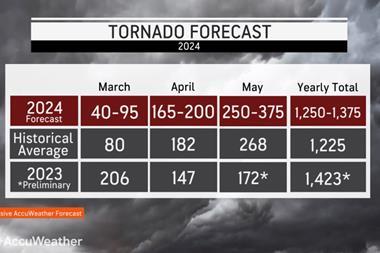The large blast in Beirut, Lebanon is expected to result in a significant insurance event as the death toll and casualties from the explosion continue to rise.
As of 10.30am local time on August 5, at least 100 people were confirmed to have been killed in the incident at the city’s port, with more than 4,000 casualties. Lebanon prime minister Hassan Diab said more than 2,700 tonnes of the highly-explosive material ammonium nitrate blew up after lying in a warehouse for several years.
Authorities have not confirmed what caused the chemical to ignite and an investigation is underway to uncover the cause of the blast. Beyond the warehouse, hospitals, commercial buildings and homes have been destroyed, and the port of Beirut is out of action.
US authorities have indicated the incident was an accident rather than a terrorist attack. The explosion is likely to result in a significant insurance event, drawing comparisons with explosions in the Chinese port city of Tianjin exactly five years ago.
The 2015 Tianjin event killed 114 people and injured more than 700 others. Two explosions, which originated in a warehouse containing dangerous sodium cyanide, were said to have generated power equivalent to 3 and 21 tonnes of TNT. Early signs indicate the Beirut death toll and casualty numbers are likely to be higher than Tianjin.
The Tianjin explosions resulted in insured losses of roughly $3 billion, according to reinsurance company Guy Carpenter. During the 2015 event, most claims came from motor, cargo, liability, and property insurance.
The disaster also caused significant disruption to global supply chains. It prompted a rethink amongst transport and logistic companies, port authorities and insurers on the concentrations of risk that can accumulate in busy ports and how best to manage and mitigate the risk.
The Tianjin blasts resulted in “one of the largest insured man-made losses to date in Asia” and “one of the most complex insurance and reinsurance losses in recent history”, James Nash, CEO of Asia Pacific Operations for Guy Carpenter, said at the time.
After the August 2015 event, at least 18 reinsurers reported large losses from the disaster in their third-quarter financial statements. Contamination from chemicals further increased the cost to insurers following the Tianjin explosions. Local insurers took a significant hit from the event, but global insurers and reinsurers were severely affected by the incident.
Zurich cited the Tianjin event as one of the reasons it pulled its £5.6 billion takeover of RSA in 2015. The insurer suffered losses of more than $275 from blasts.
According to the Allianz Risk Barometer, fire and explosion incidents ranked as the sixth top peril for businesses in 2020. The risk was identified as the number one cause of financial losses based on the results of insurance claims analysis conducted by AGCS. Fire and explosion events have caused losses in excess of $15.7bn over five years through 2018 – accounting for 24% of the value of more than 470,000 claims examined by AGCS. That was “significantly ahead” of the second top cause of losses, aviation collision and crash incidents, AGCS said.




















No comments yet